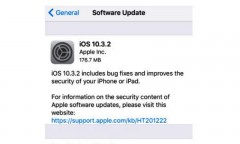By Aliza Xandria, | May 26, 2017

This dazzling Hubble Space Telescope photo of Jupiter was taken when it was comparatively close to Earth, at a distance of 415 million miles. (NASA)
A new development for the world as Juno's mission revealed the hidden things beneath Jupiter's clouds. Reports have surfaced that NASA's move to gather more data has paid off.
The first results from NASA's Juno mission are challenging researchers' beliefs about the gas giant and the results were revealed during a media teleconference Thursday with NASA researchers and published in corresponding studies in the journal Science and Geophysical Research Letters.
Like Us on Facebook
Juno launched in August 2011 but didn't arrive at Jupiter until July. The craft has been orbiting the planet and performing calculated flybys over the clouds and these happen every 53 days as Juno "screams by" Jupiter, going from the north to south pole in about two hours, reports the same post.
"The general theme of our discoveries is really how different Jupiter looked from how we expected," said Scott Bolton, Juno principal investigator, from the Southwest Research Institute in San Antonio. "This is a close-up and personal look at Jupiter. We thought it was uniform inside and relatively boring. What we're finding is anything but that. It's very complex. Jupiter from the poles doesn't look anything like it does from our usual view."
On a different note, those big cyclones that cover the highest latitudes of the planet are only now being seen in detail because previous missions to the planet never really got to look from above and below like Juno, certainly not at such a high resolution and features down to 50km across are discernable, according to BBC.
Another surprise comes from Juno's Microwave Radiometer (MWR), which senses behavior below the visible cloud surface and its data indicates the presence of a broad band of ammonia around the equator that goes from the top of the atmosphere to as deep as it is possible to detect, at least 350km down, which could be part of a major circulation system, the report added on to note.
-
Use of Coronavirus Pandemic Drones Raises Privacy Concerns: Drones Spread Fear, Local Officials Say

-
Coronavirus Hampers The Delivery Of Lockheed Martin F-35 Stealth Fighters For 2020

-
Instagram Speeds Up Plans to Add Account Memorialization Feature Due to COVID-19 Deaths

-
NASA: Perseverance Plans to Bring 'Mars Rock' to Earth in 2031

-
600 Dead And 3,000 In The Hospital as Iranians Believed Drinking High-Concentrations of Alcohol Can Cure The Coronavirus

-
600 Dead And 3,000 In The Hospital as Iranians Believed Drinking High-Concentrations of Alcohol Can Cure The Coronavirus

-
COVID-19: Doctors, Nurses Use Virtual Reality to Learn New Skills in Treating Coronavirus Patients
















